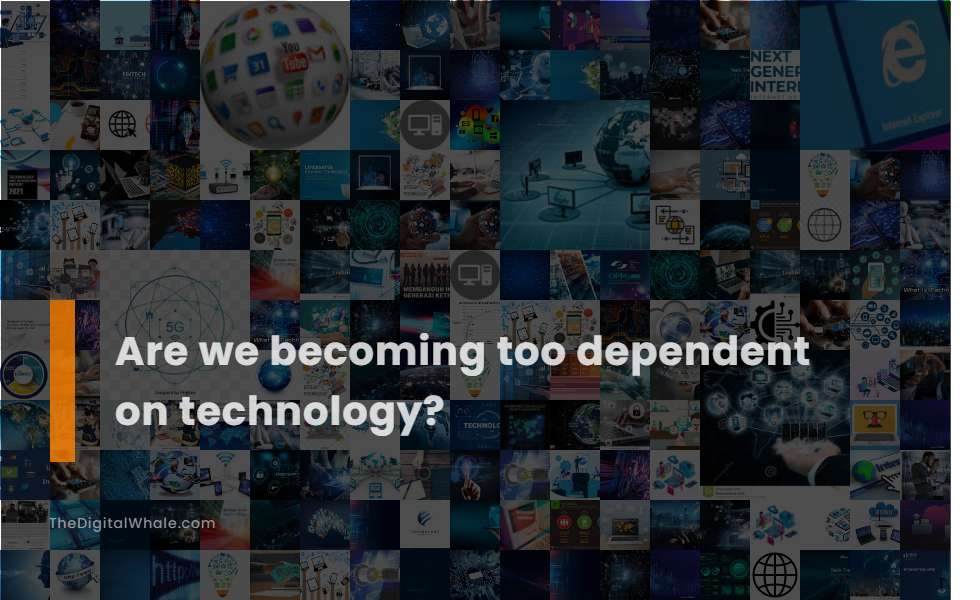Are We Becoming Too Dependent On Technology?
Is the use of technology correcting our problems or creating more problems? What are some signs that society is too dependent on technology? Let's find out more about Are We Becoming Too Dependent On Technology?.

Anxiety and Depression: Technology dependence is linked to increased rates of anxiety and depression.
Technology dependence is linked to increased rates of anxiety and depression, partly due to the disruption of social connections, sleep patterns, and the exposure to unrealistic standards on social media, which can lead to loneliness, low self-esteem, and mood disorders. The correlation between technology use and mental health issues is evident, with increased smartphone use coinciding with a rise in depressive symptoms, social isolation, and sleep deprivation. This alarming trend is contributing to higher rates of anxiety and depression among teenagers and young adults. To explore more about the relationship between technology and mental well-being, you can read further on the Link Between Technology and Depression.
Nomophobia: A significant portion of the population, 66%, suffers from nomophobia, a fear of being without their mobile phone.
Nomophobia, or the fear of being without a mobile phone, affects a significant portion of the population, particularly women and younger individuals. Prevalence rates of nomophobia vary widely due to methodological disparities across different studies, but it is suggested that up to 79% of participants may be at risk. Moderate to severe cases can range from 25.7% to 73.3% and 1% to 87%, respectively. For more detailed insights and statistics on this phenomenon, check out the study published on PLOS ONE.
Impatience: Technology has made people more impatient, expecting immediate responses and accessibility.
In today's fast-paced world, technology has heightened our reliance on instant gratification, causing a surge in impatience as people increasingly expect quick responses and instant accessibility. Studies have shown that even brief delays in content loading or response times can lead to significant abandonment rates and increased frustration. The constant expectation of instant delivery and response crafted by technology has generated inner pressure for immediate gratification, spilling over into various aspects of life. This impatience is palpable not only in waiting times for digital content and emails but also in everyday tasks like boiling a kettle. An article on ZDNet delves deeper into this phenomenon, underscoring how our tech-driven impatience is reshaping modern behavior and interactions.
Memory Impact: Over-reliance on technology can weaken memory skills as people rely less on their own brains for information.
Over-reliance on technology can lead to significant memory impairments, as individuals increasingly depend on digital devices to store and retrieve information, resulting in decreased performance in memory recall, reduced attention span, and altered brain structure and function. The constant use of digital devices can cause "digital amnesia," where the brain's ability to remember information is weakened as people rely more on technology to retain data, leading to decreased cognitive capabilities and impaired memory retention. For further insights into how this dependency is affecting our memory, you can visit the detailed analysis on Memory Impairments, which provides an in-depth look at the consequences of our reliance on technology.
Addiction: Technology addiction is common, especially among teenagers, and can have brain chemistry effects similar to substance addiction.
Technology addiction, particularly among teenagers, can lead to brain chemistry and neural patterning similar to those of substance addictions, profoundly affecting the brain's reward systems, emotional processing, attention, and decision-making. This can result in significant psychological and social consequences. Technology addiction impacts the brain by activating the reward centers, releasing dopamine, and altering neural pathways, leading to disruptions in cognitive health, social isolation, and heightened attention-deficit symptoms. These effects closely mirror the challenges seen in substance abuse, underlining the importance of addressing this growing issue among the younger generation.
Related:
What will the future of IT look like? What is the major impact of automation on the workforce? Let's find out more about What Will the Future of Work Look Like, As Automation Increases?.
Skill Replacement: Technology can replace natural skill attainment, such as using apps instead of learning basic skills.
The rise of technology is undeniably reshaping the way we develop and utilize our innate abilities. For instance, the art of handwriting is dwindling as typing becomes predominant, and mental arithmetic skills are fading with the widespread use of calculators. Even our natural sense of direction is being overshadowed by reliance on GPS systems. These shifts emphasize the critical need to balance technological advancements with the preservation of essential skills. For more insights on this issue, visit Mobicip, a resource exploring the nuanced impact of technology on skill development.
Social Skills Deterioration: Excessive technology use can hinder the development of social skills and lead to social withdrawal.
Excessive technology use can hinder the development of social skills in children by displacing time spent on real-life social interactions, leading to difficulties in understanding non-verbal emotional cues, developing empathy, and engaging in face-to-face communication. This overuse can also reduce positive family interaction and increase parent-child conflicts. Moreover, Technology Addiction in teens can disrupt normal patterns of mood and socialization, leading to social skills deterioration, feelings of isolation, anxiety, and depression. It can create a false sense of relational security and encourage an unhealthy desire for instant gratification, further impairing in-person social skills.
Sleep Disorders: Technology use can lead to sleep disorders, particularly among children and teenagers.
Technology use, particularly problematic digital technology use, is associated with poor sleep quality in children and teenagers, as it can suppress melatonin levels, stimulate the brain, and disrupt the circadian rhythm, leading to shorter sleep durations, later bedtimes, and overall poorer sleep outcomes. Screen time and digital technology use before bed can affect children's sleep by stimulating them, suppressing melatonin, and causing disturbances during the night. This highlights the need for screen-free times and relaxing activities before bedtime to ensure better sleep quality.
Physical Health Issues: Overuse of technology can result in an inactive lifestyle, musculoskeletal problems, and eyesight issues.
Excessive use of technology can lead to numerous physical health issues, including a sedentary lifestyle that contributes to obesity, cardiovascular diseases, and musculoskeletal problems such as neck and back pain, commonly referred to as "text neck" or "tech neck". Moreover, the pervasive exposure to blue light from screens can result in eyesight problems, including diminished eyesight, eyestrain, and headaches. For more detailed information on these issues, consider visiting Utah State University Extension's Electronic Use and Your Physical Health page, which provides insights into how technology affects our physical well-being and offers recommendations for mitigating its adverse impacts.
Impact on Mental Health and Well-being: Technology dependency can significantly reduce quality of life, cause isolation, and interfere with other areas of life.
Excessive technology use can lead to significant mental health issues, including anxiety, depression, and social isolation, as well as interfere with sleep and decrease self-esteem. This dependency can ultimately reduce the quality of life and isolate individuals from meaningful social interactions. Moreover, it limits the ability to forge genuine face-to-face connections and even fractures existing relationships. According to Therapy Utah, these mental health problems not only affect personal well-being but also have a profound impact on societal connections, leading to a reduction in overall quality of life.
Related:
How can I make workplace technology accessible to everyone? What makes certain products inaccessible in the first place? Let's find out more about How Can We Make Sure Technology Is Accessible To Everyone?.
